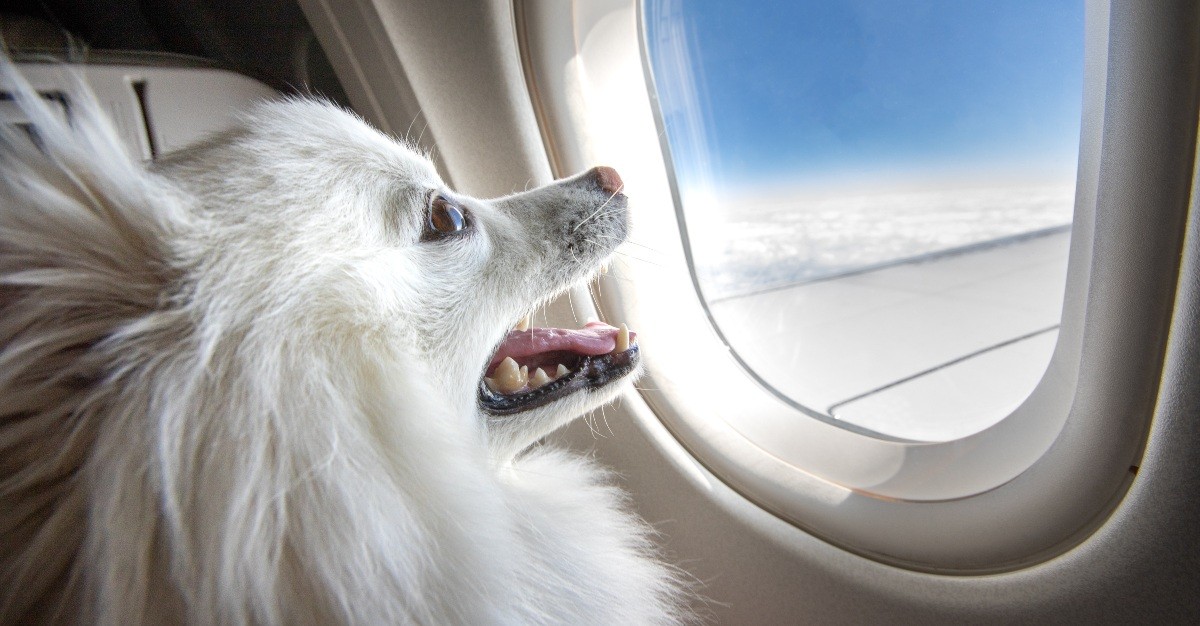Planning a trip and thinking of bringing your furry friend along? Many pet owners prefer to travel with their pets rather than bear the costs and emotional distance of kennels or pet sitters. Traveling with your pet can indeed be a wonderful experience, strengthening your bond and saving on pet care expenses while you’re away.
You’re likely already aware of your own passport needs for international travel, but what about your pet? The term “pet passport” often comes up, especially in the US, but it’s important to understand what it really means and what documents your pet actually requires.
 Ensuring your pet has the correct travel documents, often referred to as a pet passport, before international travel is crucial.
Ensuring your pet has the correct travel documents, often referred to as a pet passport, before international travel is crucial.
Understanding the “Pet Passport” Concept
In the United States, there isn’t an official document called a “pet passport” issued by the government in the same way human passports are. Instead, the term “pet passport” in the US generally refers to a collection of necessary documents your pet needs for international travel. Think of it as assembling all the required paperwork into a single, easy-to-manage package for your pet’s journey.
The necessity of these documents depends largely on your destination and origin. For instance, if your pet has lived in a country recognized by the U.S. as rabies-free for at least six months before your travel date, some requirements might be waived. However, for most international travel with pets, preparation is key, and understanding the required documentation is the first step.
Before any trip, especially an international one, a visit to a USDA-certified veterinarian is crucial for pet owners in the U.S. This veterinarian will be instrumental in helping you compile your pet’s “passport,” ensuring you have all the necessary forms and certifications for smooth travel.
Essential Documents for Pet Travel
While the specific documents can vary, several are commonly required for international pet travel. These form the core of what is often referred to as a “pet passport.”
Rabies Vaccination Certificate
Rabies is a serious disease that affects both humans and animals, and it remains a concern in many parts of the world. Therefore, proof of rabies vaccination is almost universally required for pet travel. Many regions, including certain states within the U.S., have strict rabies vaccination protocols, often requiring vaccination within a specific timeframe before travel.
For example, the U.S. mandates that dogs, cats, and ferrets over three months old must be vaccinated against rabies at least 30 days prior to entering the country from certain regions. Always verify the specific rabies vaccination requirements for both your departure and arrival locations well in advance of your travel dates.
Certificate of Veterinary Inspection (CVI)
A Certificate of Veterinary Inspection, also known as a health certificate, is a crucial document. This official certificate, issued and signed by a licensed veterinarian, confirms that your pet has been examined and is deemed healthy and free from disease at the time of inspection.
CVIs are typically valid for a limited period, often just a few days or weeks, so timing your vet visit appropriately before your travel is essential. Check with the relevant authorities in your departure and destination locations to confirm the validity period of the CVI they require.
Acclimation Certificate and Other Potential Documents
Depending on the specifics of your travel, particularly if flying, you might need additional documentation. An acclimation certificate addresses regulations concerning your pet’s welfare in extreme temperatures, especially when they are in airline cargo or waiting to board. Contact your airline directly to determine if an acclimation certificate is necessary for your pet’s travel plan.
Beyond these core documents, you might also encounter requirements for:
- Feeding Confirmation: Proof that you have provided food and water for your pet before a flight.
- Live Animal Checklist: A form with instructions for airline personnel handling your pet.
- Tranquilizer Consent Forms: If you plan to tranquilize your pet for travel, a veterinarian’s consent form may be required.
The specific documents needed are heavily influenced by your origin and destination points. Resources like the U.S. State Department website and pet travel websites provide detailed information based on travel routes.
Airline-Specific Requirements for Pet Travel
If air travel is part of your journey, understanding airline policies is paramount. Airlines offer several options for pet travel, each with different costs and requirements:
- In-Cabin or Cargo Travel (with you on the plane): Most airlines treat pets traveling with their owners as “excess baggage” or “accompanied cargo,” incurring charges accordingly.
- Separate Flight (as cargo): Booking your pet on a separate flight as cargo is another option, but it usually involves significantly higher cargo rates.
- Licensed Commercial Pet Shippers: These specialized services manage all aspects of pet air travel, acting as a third party to handle logistics. While convenient, they also come with additional costs.
It’s crucial to be aware that airlines, like United Airlines, may have breed restrictions, prohibiting certain breeds of dogs, as well as other animals like large rabbits or piglets, from flying. Furthermore, pets with pre-existing health conditions might not be suitable for cargo travel.
Conclusion
While there’s no single, official “pet passport” in the U.S., ensuring your pet has the correct collection of travel documents is essential for smooth international journeys. This typically includes a rabies vaccination certificate, a Certificate of Veterinary Inspection, and potentially other forms depending on your destination and mode of transport. Thorough planning and consultation with your veterinarian and airline are crucial steps in preparing your pet for travel. By understanding and obtaining the necessary documentation, you can ensure a safe and stress-free travel experience for both you and your beloved pet.
